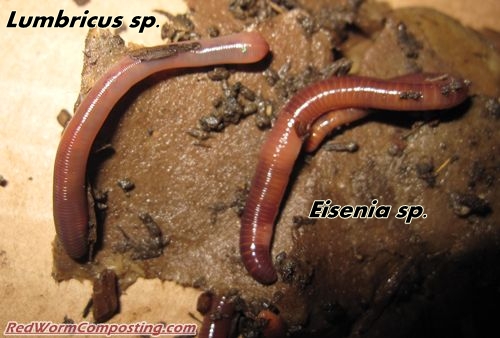Transform Your Waste with Red Wiggler Composting: A Complete Beginner's Overview
Transform Your Waste with Red Wiggler Composting: A Complete Beginner's Overview
Blog Article
Understanding the Conveniences of Red Wiggler Composting: How This Effective Approach Transforms Organic Waste Into Nutrient-Rich Dirt Modifications
Red Wiggler composting, utilizing the varieties Eisenia fetida, offers an engaging approach to organic waste management, transforming kitchen area scraps and backyard debris into beneficial soil modifications. This method not just enhances dirt fertility but additionally addresses pushing ecological worries, consisting of garbage dump waste reduction and greenhouse gas emissions.
What Are Red Wigglers?
Red wigglers, medically understood as Eisenia fetida, are a types of earthworm that play an essential role in vermicomposting systems. These worms are defined by their reddish-brown color, fractional bodies, and a distinctive capacity to flourish in organic-rich atmospheres, making them suitable for composting applications - Red Wiggler Composting. Unlike their garden-dwelling equivalents, red wigglers prefer to inhabit the upper layers of soil, where rotting matter is plentiful
Normally gauging in between 3 to 4 inches in size, red wigglers have a high reproductive price, allowing them to increase swiftly under ideal problems. They possess a distinct gastrointestinal system that permits them to refine organic waste successfully, transforming it into nutrient-rich spreadings, which are extremely beneficial for plant development.
Their resistance to differing dampness degrees and temperature varies even more enhances their energy in vermicomposting arrangements, making them a preferred option among composting lovers. Furthermore, red wigglers are aerobic organisms, which necessitates a well-aerated composting environment, making certain effective decomposition. Recognizing the biological characteristics and habits of red wigglers is vital for maximizing their use in lasting waste monitoring practices.

Benefits of Vermicomposting
Using the power of vermicomposting offers a plethora of farming and ecological advantages. It significantly minimizes organic waste in garbage dumps, thus minimizing methane discharges, a potent greenhouse gas. By drawing away food scraps and lawn waste to vermicomposting, we sustain an even more sustainable waste monitoring system.
Furthermore, vermicomposting improves soil health. The spreadings produced by red wigglers are abundant in necessary nutrients, microbes, and enzymes, enhancing soil framework and fertility. This nutrient-rich modification promotes robust plant growth and raises water retention, reducing the requirement for chemical fertilizers.
In addition, vermicomposting fosters biodiversity in the dirt community. The introduction of advantageous microorganisms from worm spreadings aids in disease suppression and nutrient cycling, producing a much healthier environment for plants.
Financially, vermicomposting reduces the expenses related to chemical inputs and waste disposal. Farmers and garden enthusiasts can grow premium fruit and vegetables at reduced expenditures, adding to food security and sustainability.
Exactly How to Begin Composting
Beginning a composting endeavor can be a straightforward and gratifying process. This will assist preserve a well balanced temperature, vital for the composting process.
Collect organic products such as kitchen scraps, lawn waste, and shredded paper. Aim for a balanced mix of 'eco-friendly' materials, high in nitrogen (e.g., fruit scraps, coffee grounds), and 'brownish' materials, abundant in carbon (e.g., dried fallen leaves, cardboard) A proportion of approximately 2:1 eco-friendly to brownish materials is ideal.
Beginning layering your materials, making sure ample air circulation by turning the stack routinely. This promotes cardio decomposition, lowering odors and speeding up the procedure. Monitor moisture levels; the garden compost ought to really feel like a wet sponge yet not extremely wet.
Nutrient Account of Vermicompost
Composting, particularly with red wigglers, produces a nutrient-rich item known as vermicompost. This natural change is identified by its high focus of vital nutrients, making it an invaluable source for gardening and agriculture. Vermicompost commonly contains elevated levels of macronutrients such as phosphorus, potassium, and nitrogen, which are essential for plant growth. In addition, it gives trace elements like find this magnesium, iron, and calcium, promoting durable plant advancement and improving dirt health and wellness.
The microbial activity present in vermicompost even more enhances its account, introducing useful bacteria and fungi that advertise vitamins and mineral accessibility and uptake in plants. This organic element aids in subduing plant conditions and enhancing soil framework, causing improved water retention and aeration.

Environmental Effect of Composting
The environmental effect of composting, particularly with using red wigglers, is profound and multifaceted. This method dramatically decreases the quantity of natural waste sent to land fills, which consequently decreases greenhouse gas discharges, specifically methane-- a potent contributor to environment adjustment. By diverting organic products from landfills, red wiggler composting not only aids mitigate ecological degradation however additionally promotes sustainable waste monitoring practices.

Additionally, composting adds to carbon sequestration, as the process catches carbon dioxide from the environment and stores it in the dirt. This all-natural process aids in combating climate change while enriching the soil - Red Wiggler Composting. Overall, red wiggler composting presents a sensible, environmentally friendly option for waste monitoring and ecological sustainability, advertising much helpful hints healthier environments and a much more lasting future
Conclusion
In conclusion, Red Wiggler composting offers as a reliable technique for converting natural waste into beneficial soil modifications. The process not just improves dirt fertility and framework but additionally reduces ecological problems linked with waste disposal.
Red Wiggler composting, utilizing the varieties Eisenia fetida, provides a compelling strategy to organic waste monitoring, converting cooking area scraps and yard particles right into important dirt modifications. Unlike their garden-dwelling counterparts, red wigglers like to inhabit the top layers of dirt, where decomposing matter is bountiful.
The castings created by red wigglers are rich in essential nutrients, microorganisms, and enzymes, boosting soil structure and fertility. The nutrient-rich results of red read the article wiggler task improve soil framework, rise water retention, and advertise biodiversity within the dirt community.In final thought, Red Wiggler composting offers as an effective method for converting natural waste right into valuable dirt modifications.
Report this page